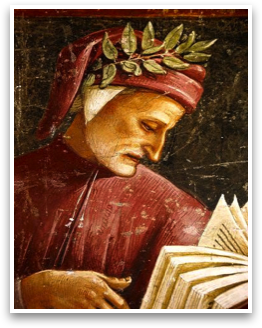
Dante's Inferno
Few works of literature have inspired so many poets and novelists, theologians and philosophers, as has Dante's Comedy. For Dante, the phrase "Divine Comedy" would have been redundant, as a true comedy (i.e. "happy") necessarily involves the culmination of a torturous journey with the presence of the divine.
Accompanied by his guides Virgil (representative of human reason) and Beatrice (representative of divine love and grace), Virgil descends to the pits of despair, sin, and suffering that he may ultimately ascend to the heights of God's goodness and glory.

Themes and Facts
- Written in Italian
- Difficult to translate to English, given the rhyme-rich nature of Italian versus the rhyme-poor nature of English.
- Written in terza rima, an interlocking rhyme scheme.
- Structure contains many references to God's trinitarian nature, a central belief in Dante's Catholic thought.
- The Comedia consists of the Inferno, Purgatorio, and Paradiso (i.e. Hell, Purgatory, and Paradise).
- Dante relies upon the contrapasso, an ironic means of punishment whereby sinners receive retribution that reflects their primary sin on earth.
- No one and no group is spared Dante's criticism, including the state and the church.
Study Questions
- What progression do you see in Dante from the poem's beginning to the poem's end?
- What is the significance of Satan's immobility?
- What are some of the most memorable encounters Dante has with the sinners he meets in hell?
- One critic has described Dante's paradise as a "feast of life, song, and movement." How is hell the opposite?
Through language that captures at once the despair of sin and the heights of the divine, Dante Aligheri's Comedy takes readers on a journey that challenges both mind and spirit. The Inferno shows both the futility and frailty of sin as well as the limits of human reason that ultimately must give way to the power of divine grace.